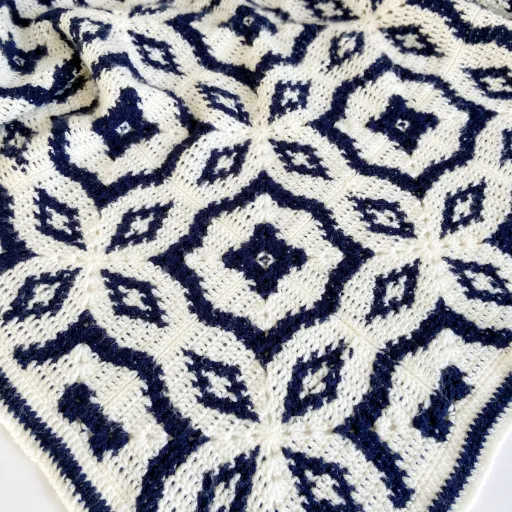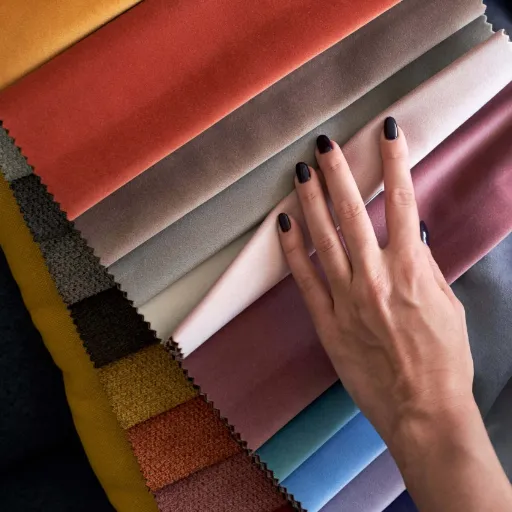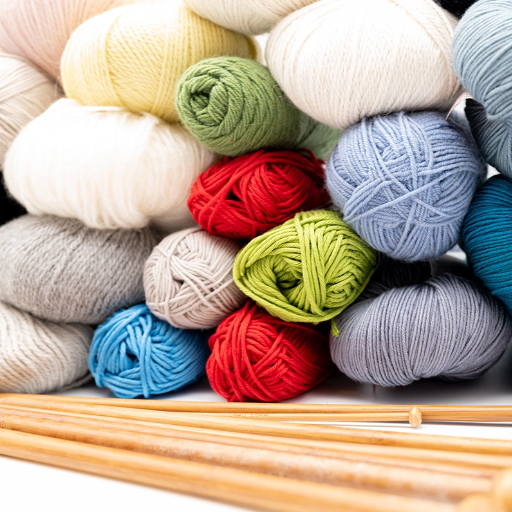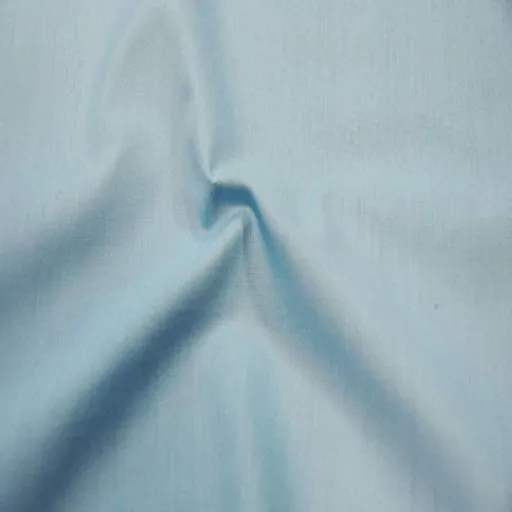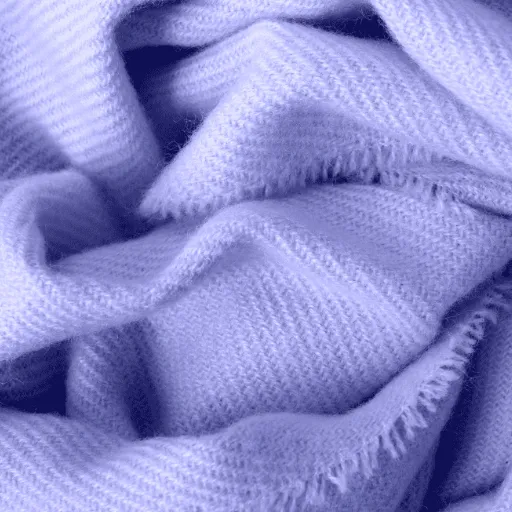It can feel overwhelming when selecting fabrics from acrylics and polyester. Both fibres are primarily used in clothing, upholstery, and everyday products, but they each have their characteristics to meet specific needs. Are you looking for warmth and a soft feel? Or do you prioritize strength and affordability above all else? This blog post explores the key differences between acrylic and polyester fabrics, allowing you to understand their strengths and weaknesses, as well as where their uses are best suited. The very conclusion will leave you ready to select the fabric that suits your preferences and lifestyle perfectly.
Understanding Acrylic and Polyester Fabrics
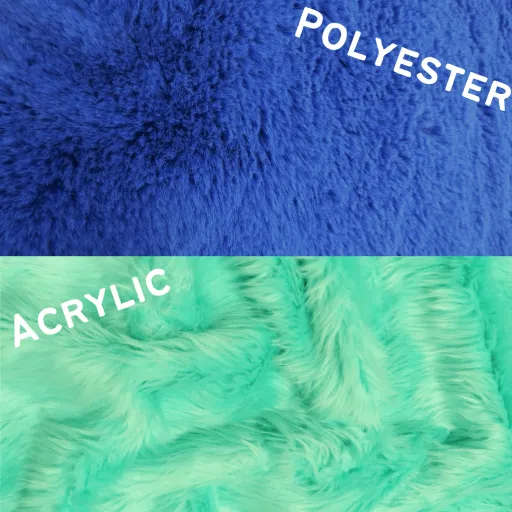
A
Acrylic Fabrics
Acrylic fabrics are synthetic materials designed to mimic the softness and warmth of natural fibers, such as wool. They are fine for lightweight clothes, do not easily fade, and are quick-dry, making acrylic fabrics common for outdoor furniture, sweaters, and blankets. However, acrylic is considered to be less durable than some other fabrics and will develop pilling over time. Its primary use is where comfort and appeal take precedence.
P
Polyester Fabrics
Apart from other synthetic fibers, polyester is popular for being very durable and versatile. Wrinkle-, shrink-, and stretch-resistant, it is valuable for a wide range of purposes, from garments to upholstery. The stain and water resistance of polyester adds to the factor of practicality. However, it can feel hotter and less comfortable compared to natural fibers. Polyester is an excellent choice for situations where long-term durability and ease of maintenance are essential.
What is Acrylic Fabric?
One type of synthetic material is acrylic fabric, a polymer called polyacrylonitrile. Acrylic is lightweight and has a woolly feel, so it is often used as an alternative to natural fibers like wool. It is considered a good fiber because of its softness, warmth, and ability to resist degradation from sunlight and mildew. Since acrylic fabric holds color well and resists fading, it is sometimes applied in sweaters, blankets, and outdoor upholstery. Lesser breathability can be a downside of acrylics, which consequently makes them less eco-friendly compared to their natural counterparts. Notwithstanding these disadvantages, acrylics are favored for being durable and inexpensive textile options.
What is Polyester Fabric?
Polyester textile is a synthetic textile made by the deposition of polymer fibers from chemical synthesis involving petroleum, air, and water. This versatile textile is used for various applications — including clothing, upholstery, and industrial purposes — due to its strength, wrinkle resistance, and shape retention. Polyester is a lightweight material with rapid drying properties, making it particularly suitable for making activewear and other outdoor gear. Thanks to recent developments, recycled polyester is also being produced as a more environmentally friendly option by recycling waste plastics. Otherwise, they are indisputably unsustainable as they do not biodegrade. The significant affinity for use of that fabric comes from its relatively cheap and easy maintenance properties.
Key Differences Between Acrylic and Polyester
Here’s a table summarizing the key differences between acrylic and polyester based on the latest information:
| Parameter | Acrylic | Polyester |
|---|---|---|
| Texture | Soft, wool-like | Smooth, sometimes tough |
| Warmth | Warmer, ideal for cold weather | Less warm, better for activewear |
| Durability | Less durable, prone to pilling | Highly durable, resists wear and tear |
| Breathability | Less breathable | More breathable |
| Moisture-Wicking | Poor moisture-wicking | Excellent moisture-wicking |
| Stretchability | Limited stretch | Moderate stretch |
| Eco-Friendliness | Less eco-friendly | Recycled options available |
| Cost | Generally more affordable | Slightly more expensive |
| Common Uses | Sweaters, scarves, blankets | Activewear, outdoor gear, home textiles |
| Care Requirements | Gentle washing to prevent damage | Easy to care for, machine washable |
| Weather Resistance | Less resistant to the weather | Highly weather-resistant |
| Sustainability | Non-biodegradable, sheds microplastics | Recycled polyester reduces environmental impact |
Choosing Between Acrylic and Polyester
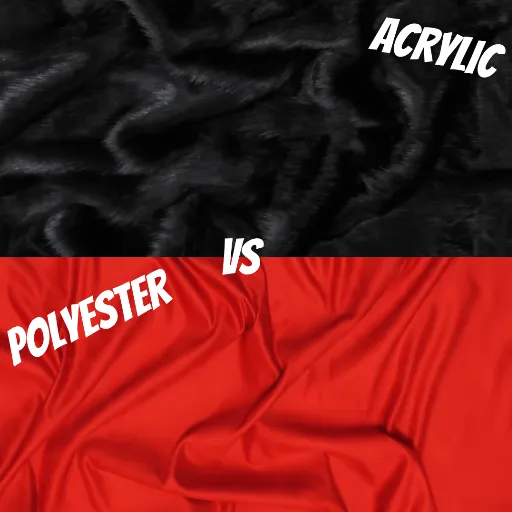
Compare the specific features and your requirements of acrylic and polyester before making your decision. Acrylic would be your choice if you wish to create soft and warm, lightweight materials such as sweaters and blankets. It does, however, require gentle care and is not extremely weather-resistant. Polyester is very durable and resistant to weather, requiring minimal maintenance. It is therefore considered suitable for activewear and outerwear. If you lean toward sustainability, then recycled polyester is your more eco-friendly alternative. The decision should largely depend on utilitarian considerations, care preferences, and environmental concerns.
When to Use Acrylic Fabric
Acrylic fabric, being a versatile fabric, is well-suited where durability, warmth, and cost-effectiveness are priorities. It is often used for sweaters, scarves, and hats due to the resemblance in softness and insulation features that acrylic fabric has to wool. It is very light; hence, it poses less of a threat from moths. Moths cannot eat it. It is also colorfast, making it a laudable choice for blankets, upholstery, and outdoor furniture covers. Fast-drying and moisture-resistant, acrylic is also an excellent choice for outdoor enjoyment and active lifestyles. Less breathability is a disadvantage of acrylic when compared to natural fibers; therefore, consideration should be given to whether it will be used in warmer climates or engaged in high-impact activities before making a purchase.
When to Choose Polyester Fabric
The merit of choosing polyester fabric comes only when life with durability, economic pricing, and easy maintenance takes precedence. A synthetic fiber, it wears, stretches, and shrinks less, making it suitable for lifestyles that involve a lot of tension and intentional use. Polyester stands out for its moisture-wicking, quick-drying, and UV-resistant qualities, making it the ideal choice for active sportswear and outdoor use. It is favored for home decorative applications in curtains, upholstery, and bedding due to its stain resistance and retention of color brightness. Many modern polyester blends are far from toxic; they are exceptionally breathable and soft, almost like silk and breathable cotton, making them ideal for cold climates and comfortable in warm ones. For a dye-your-own, affordable, long-lasting, and low-maintenance fabric, polyester is indeed the most popular choice among fabrics.
How to Decide: Acrylic or Polyester?
Choosing between acrylic and polyester ultimately depends on the need, choice, or application. Acrylic should be selected when warmth, softness, and higher resistance to outdoor elements, such as high UV rays and moisture, are desired, in ideal applications like blankets, sweaters, or outdoor furniture. Polyester, conversely, is renowned for its ability to last long, is easy to maintain, versatile, repels stains, retains brilliant colors, and withstands heavy wear; thus, it is suitable for activewear, home furnishings, and travel-oriented materials.
Trends and search data also suggest that polyester is typically chosen for its practicality and affordability in everyday situations. In contrast, acrylic is mainly preferred for seasonal items or those that require insulation. Consider your budget, climate, and the intended end-use of the fabric to make the most suitable decision and best fit your lifestyle.
Acrylic and Polyester in Different Contexts
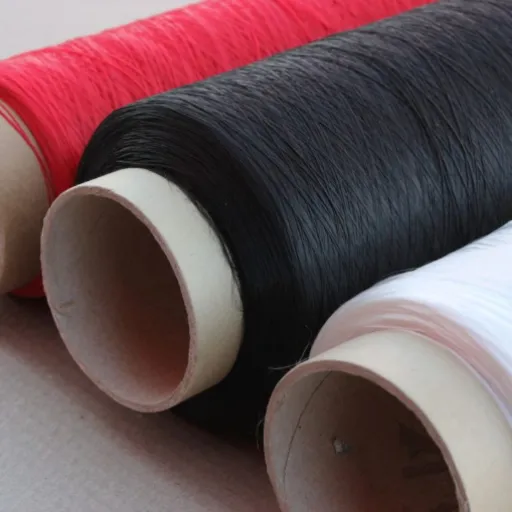
Acrylic is characterized by a warm, woolly texture and is often used for sweaters, blankets, and other types of cold-weather apparel. It is, in fact, a good option for clothing or items made specifically for the changing seasons. Polyester, on the other hand, is almost synonymous with outdoor wear, activewear, and everyday-use items: it is durable, wicks moisture away, and resists wrinkling and shrinking. In general, acrylic is preferred for those living in colder climates and engaging in insulating work, as it suits almost any lifestyle, from an active to a utilitarian one.
Clothing Applications
This choice is primarily determined by who needs and wants it. Acrylic fabrics are often selected to resemble wool; therefore, they are ideal for sweaters, scarves, and gloves that provide warmth and a soft feel. On the contrary, polyester is excellent for activewear, jackets, and casual outfits due to its moisture-wicking capabilities, which allow it to dry quickly and resist wrinkles. Market trends indicate an increased interest in fabrics that are hybrids of these two materials, combining the soft feel of acrylics with polyester’s practical attributes-an attempt to get the best of both worlds. These hybrid options are becoming a favorite for winter sportswear and casual garments designed for wear at any time.
Home Textiles and Upholstery
When it comes to home textiles and upholstery, whatever suits the needs and preferences of the masses would be deemed the answer to the comparative question of which is better: acrylic or polyester. Known for its warmth and soft feel, with excellent color retention, the textile is ideal for cozy blankets, decorative cushions, and upholstery that impart a comfortable and warm ambiance to interiors. In contrast, polyester, being highly durable, stain-resistant, and easy to maintain, makes for a convenient option in high-traffic areas such as sofas and chairs.
Present search trends data indicate a progressive surge in consumer interest in materials exhibiting these qualities, such as blended fabrics that combine the luxury aesthetics of acrylic with the hard-won resilience of polyester. Such a joint effort then achieves a balance between comfort and practicality, making it highly attractive for contemporary homes. Therefore, when purchasing acrylic or polyester, the consumer’s needs, style preferences, and maintenance issues should be taken into consideration.
Recent Trends and Innovations in Fabric Technology
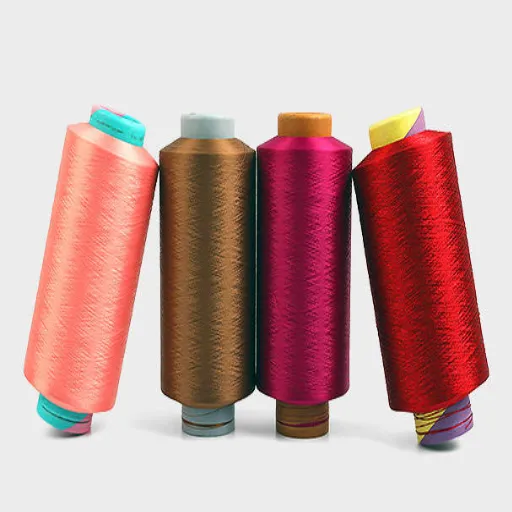
Sustainability, durability, and performance are the top priorities in recent advances in fabric technology. Hydro-environmental textile technologies include those that encourage the use of recycled polyester or organic cotton to sustain the earth, from which the heavens draw their resources. These innovations, with their moisture-wicking properties or high thermal insulation, bring significant comfort to the end user in extreme weather conditions. Additionally, smart textiles have recently emerged, offering possibilities ranging from temperature regulation to health monitoring. Thus, design comes with functionality and an environmentally conscious design. Very changes inspire these in consumer demand.
Sustainability in Polyester and Acrylic Production
One pressing concern has been the sustainability of polyester and acrylic production, as these synthetic fibers are derived from petrochemicals, making their production expensive in terms of energy and consuming non-renewable resources. However, these issues are increasingly tackled nowadays. rPET for polyester is gaining traction as an alternative to using virgin materials, thereby reducing carbon emissions. With acrylics, sustainability remains unaddressed mainly; however, studies are underway into bio-based options and processes that reduce emissions. In tandem with that, closed-loop recycling of both fibers further minimizes waste and fosters circularity. Although the issues persist, it slowly but surely meets environmental standards and consumer demand.
Consumer Preferences for Acrylic vs Polyester
The decision is often dependent on factors such as price, durability, comfort, or use. Based on recent search-trend data gathered, polyester has been preferred for its affordability, wrinkle resistance, and durability. Searches for polyester-derived clothing or home textiles are quite common as they are utilized in many applications that require strength or fast drying.
Acrylic, on the other hand, is often chosen for its luxurious feel and its ability to mimic more natural fibers, including wool. Acrylic remains a favorite in colder zones, thanks to its warmth and soft feel, making it suitable for use in various clothing projects, such as sweaters, blankets, and scarves. However, the search data also highlights concerns among consumers about acrylic’s tendency to pill over time and, to some extent, its environmental impact compared to polyester.
Technological Advances in Acrylic and Polyester Fabrics
In recent years, technology for both acrylic and polyester fabrics has advanced to address concerns raised by consumer search data, including durability, texture, and environmentally friendly aspects. For an acrylic type of innovation, it has led to the development of low-pilling treatments and improved dyeing processes, increasing stain resistance and color fastness. This improvement intends to reduce the wear and tear of clothes, a primary concern that many users have expressed.
However, polyester has made remarkable strides in terms of recyclability and environmentally friendly production methods. Recycled polyester, known as rPET, is indeed a significant step toward reducing its environmental impact, as it is technically made from post-consumer plastic bottles. This increased attention toward greener options is further being supported by new research into sustainable polyester blends and biodegradable alternatives.
Ultimately, these advancements demonstrate the industry’s commitment to prioritizing consumer needs when balancing performance, comfort, and sustainability. Regarding either softness, durability, or ecological concerns, innovations for both acrylic and polyester fabrics are continually upgrading the textile market.
Final Thoughts on Acrylic vs Polyester
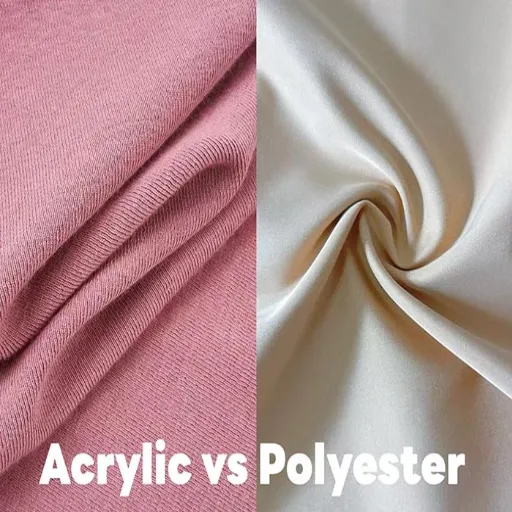
Although both have their strengths and cater to different needs, acrylic has traditionally been known for its softness, and it has a woolly feel. Therefore, conditions requiring the utmost comfort, such as those for sweaters or blankets, would benefit from acrylic’s input. On the contrary, polyester offers better durability, moisture-wicking properties, and wrinkle resistance, making it a versatile and suitable choice for active wear, outdoor equipment, and home furnishings. From the standpoint of the environmentally conscious, newer innovations in the sustainable synthesis of both fibers offer greener alternatives. Ultimately, the better option depends on what is required of the product in terms of comfort, durability, aesthetics, and environmental issues.
Making the Best Choice for Your Needs
Depending on the garment’s purpose and my priorities, I weigh various considerations when choosing between cotton and polyester. Cotton is my choice when I prioritize softness and breathability as everyday comforts. Polyester, on the other hand, is my go-to choice for a highly durable, less costly option that performs well in activewear. Environmental impact versus functionality may also influence my decision-making in such cases.
Future of Acrylic and Polyester in the Textile Industry
Being in equal parts, the future of acrylic and polyester in the textile industries is thus greatly influenced by rapid technological transformations and the growing environmental consciousness. Acrylic remains in high demand in knitwear, upholstery, and sportswear, as it is warm and exhibits characteristics similar to those of wool. However, an increasing amount of importance is being attached to developing more environmentally friendly methods of producing acrylic fibers due to the environmental impacts of their manufacturing and disposal.
Polyester has made its way through the ranks of global industries to stay, thanks to its versatility, strength, and cheap nature. The promise of innovations, for instance, recycled polyester, whose raw materials come from PET bottles, can offer a new life for polyester from an environmental perspective. Investments in further circular textile processes, such as closed-loop recycling systems, will continue to contribute to building a sustainable future for polyester.
Acrylic and polyester manufacturers will be encouraged to reduce their reliance on fossil fuels and carbon emissions, driven by an increase in consumer awareness and demand for eco-friendly textile products. A combination of sustainability and functionality will define their place.
Reference Sources
Here are three professional and authoritative sources discussing the comparison between acrylic and polyester:
Acrylic vs Polyester: A Comprehensive Comparison (Georgia Institute of Technology):
This source highlights the differences in end use, for instance, acrylic, which absorbs heat and sweat, making it less suitable for sportswear, while polyester performs very well in such applications.
Understand Your Fibers | Textiles (University of Georgia Extension):
The website highlights polyester as a pioneer in versatility, from efficient mixing with other fibers to providing wash-and-wear ease.
The Fabric for Our Lives – Translational Ecology (Duke University):
A comparative analysis of energy use for fiber production is presented among acrylic fibers, polyester fibers, and other fibers in the context of sustainability.








